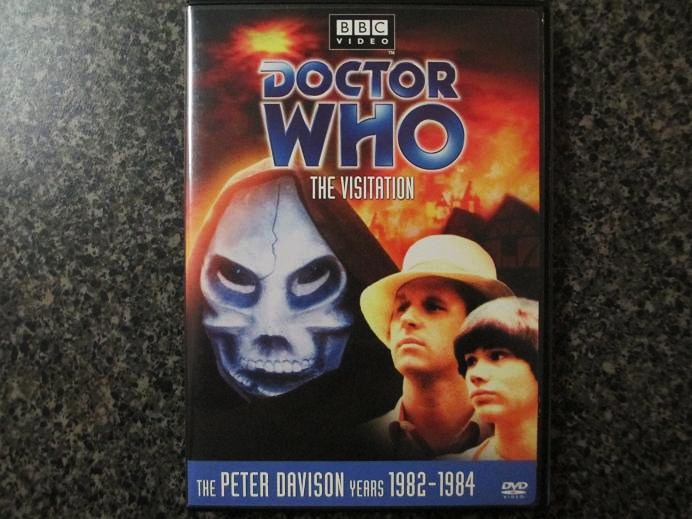The unfortunate side effect of this is that you spend almost all the first episode waiting for the Master to reveal himself, which doesn't actually happen until the cliffhanger. (Although kudos to them for the actual shot -- the blurring between the two versions of the Master's face is whatever, but they do a really nice job of matching the body shot, such that you have to actively look to see when the changeover happens.) And, unfortunately, there's not much else to go on for the duration. Something's up with King John, that much the Doctor deduces (since he's supposed to be in London that day, according to history), but there's little else in the way of clues as to what's going on, beyond additional reinforcement of "this king is an imposter". Still, the jousting is entertaining to watch, and the swordfight between the Doctor and "Sir Gilles" is half decent.
But no, part one (which is also Doctor Who's 600th episode -- 600 episodes! Now that's a milestone) is all set-up, and then part two is almost all wrap-up, as this is only a two-part story. The reversal by the Master (where he changes out of the Sir Gilles make-up and reappears as the Master), where he convinces them that it's the "king's demons" (the TARDIS crew) that have been adversely affecting King John, is rather nice -- even if you have to wonder why Lord Ranulf doesn't recognize the Master as the unmasked Sir Gilles, who was then shoved into an (anachronistic) iron maiden which disappeared. And while the Doctor calls the Master's plan of altering history so that King John is deposed and thus never signs Magna Carta "small-time villainy", it's still potentially a big change, as Magna Carta is quite an important document (even if it wasn't at the time, as King John almost immediately got Pope Innocent III to declare it null and void and refused to obey it himself). That said, it's not clear what the Master hopes to gain from this plan, other than amusement.
 |
| Turlough, Tegan, the Doctor, and Kamelion. (The King's Demons Part Two) ©BBC |
It's only two episodes, so it might be unfair to judge it by the same standards as stories that have more time to develop, but The King's Demons is a rather slight affair. For all the talk about Magna Carta, it's hard to get the sense that any of this actually matters. Still, at least it looks decent, and the direction is good as well. But ultimately, The King's Demons just feels like a throwaway tale, and a less-than-stellar way to technically end season 20.126 Maybe if the industrial action hadn't killed Eric Saward's Dalek script The Return we would have had a more effective season closer, but as is what we get is limp.
Season 20 itself hasn't been the most effective of seasons. Producer John Nathan-Turner told us that, while it wasn't intentional, season 20 would feature an element of the show's past in every story. This might be part of the problem. There's a tendency here to focus more on the past than on the future, but the issue is that too often there doesn't seem to be enough of a story to support those elements. What we get instead are a series of small scale threats, stories that are charming in their own way but don't stand out much from the crowd. The greater fluctuations in ratings this season (a lot less stable than season 19, and generally lower as well) seem to indicate that the audience hasn't been terribly impressed either. There's nothing that's really terrible this season, but too often there's a sense that nostalgia is enough to carry them through -- even if the nostalgia evoked isn't terribly strong in the first place.
But before we reach season 21, there's one more blast of pure nostalgia left, in time for Doctor Who's twentieth anniversary...
126 I say technically because the next story, The Five Doctors, was made with season 20 funds, but didn't air until some eight months later. Still, for organizational purposes I'm counting it as part of season 20.






















